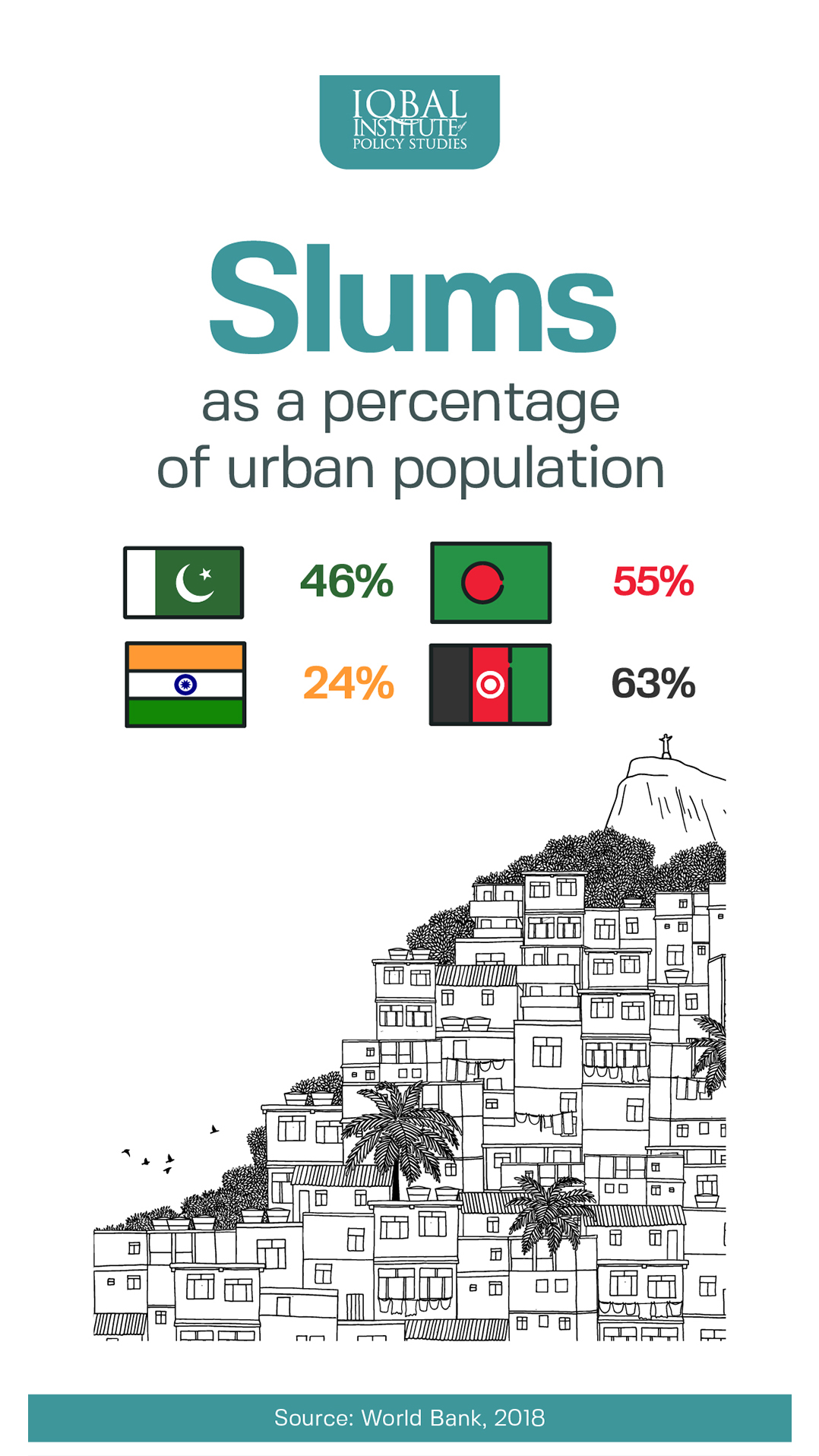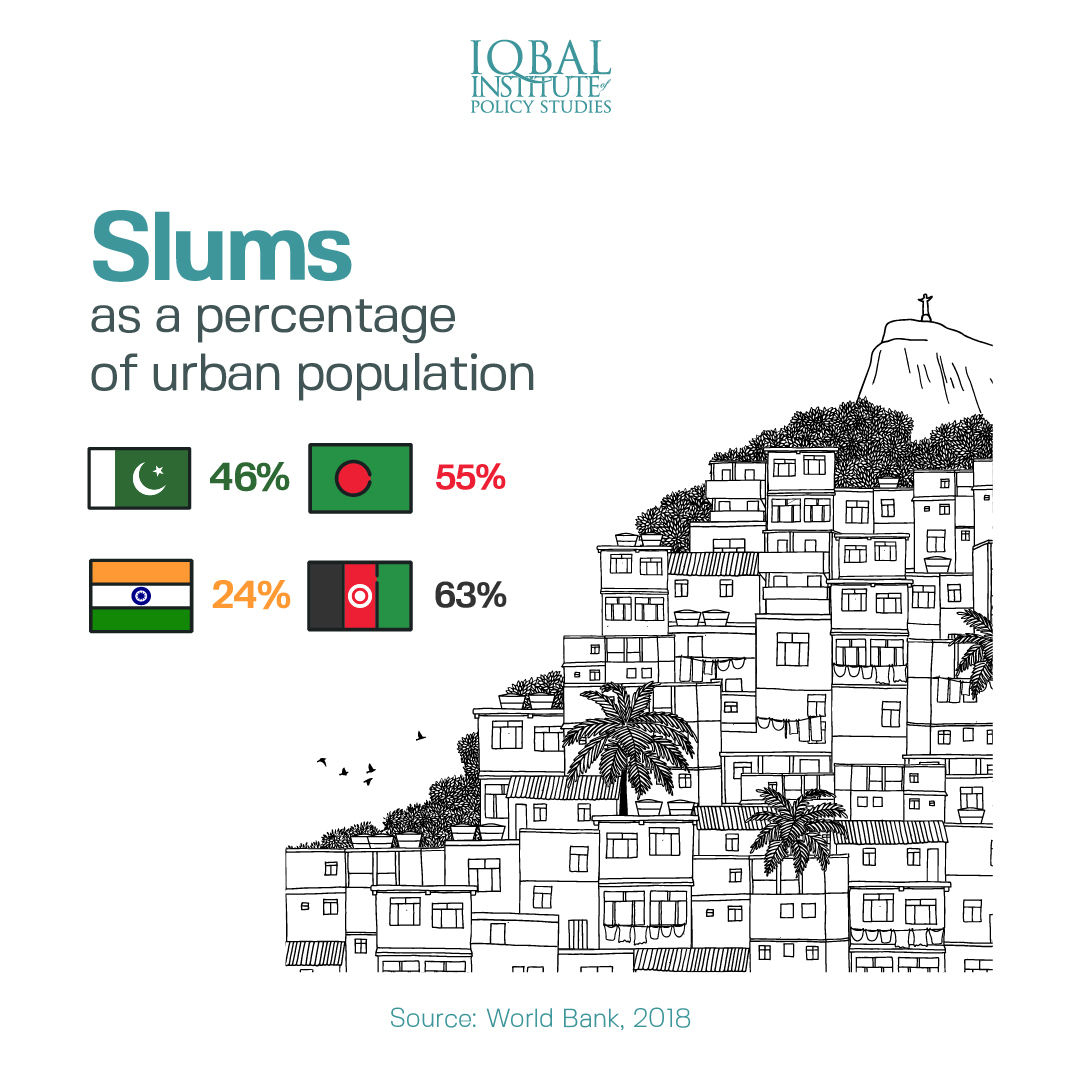
The affordable housing crisis in South Asian countries, including Pakistan, India, and Bangladesh, has led to the development of slum settlements in urban areas. Most of the slum settlements are created on a makeshift basis and do not have a solid foundation. They have poor sanitation and other municipal services such as an adequate sewerage system and water and energy supply. Also, an absence of law and regulation exposes the region to increased criminal activity and lawlessness.
Currently, 46% of Pakistan’s urban dwellers live in informal settlements or Katchi Abadis. 8 million people live in slum settlements in Karachi, whereas Lahore has 1.7 million residents in informal and squatter settlements. Furthermore, 24% of India’s population lives in slums, and more than 55% of Bangladesh’s population lives in slums. In Afghanistan, the conditions worsen, with 63% of the population living in slums. More than 70% of the city residents live on land that is not registered in Kabul, and multiple claims characterise land titles.
In South Asian countries like Pakistan, India, and Bangladesh, developers and real estate officials need to focus their products and services on the low- and middle-income demographic because they constitute the greatest demand in the housing market.


Leave a Reply